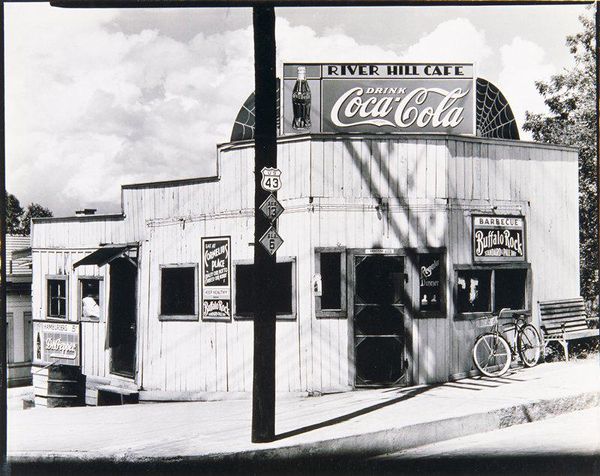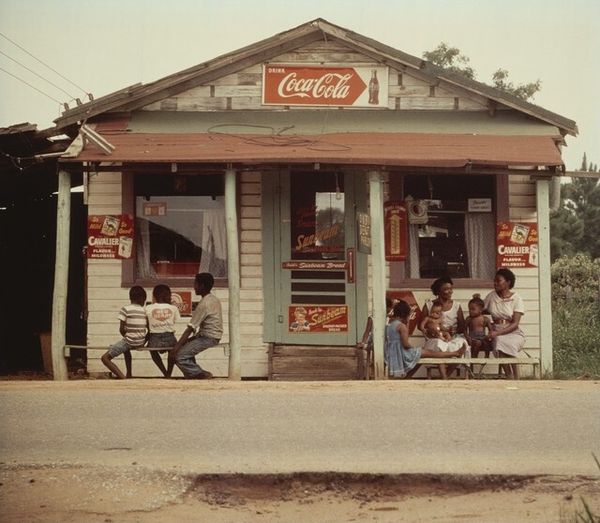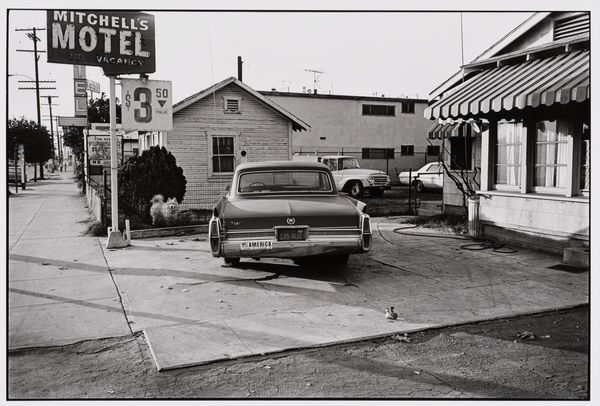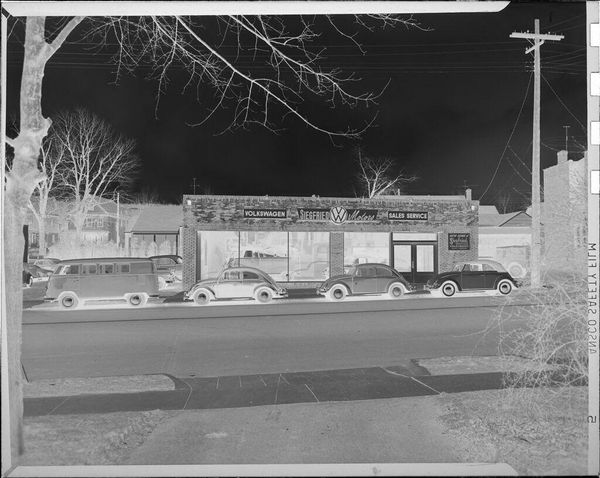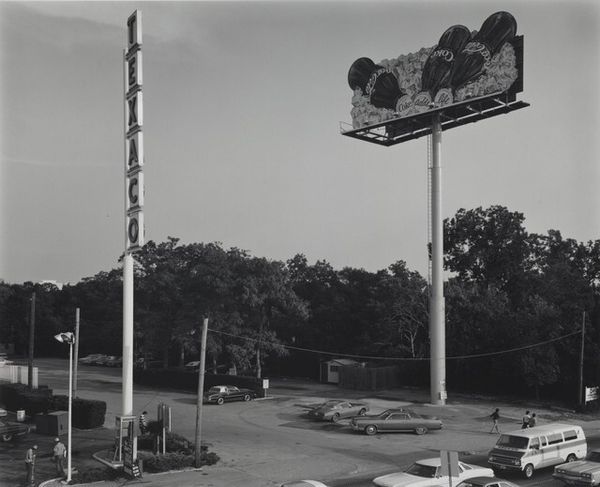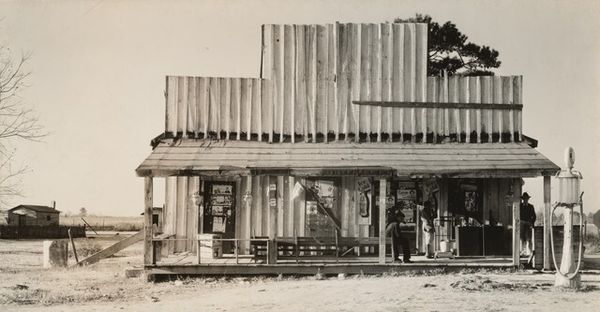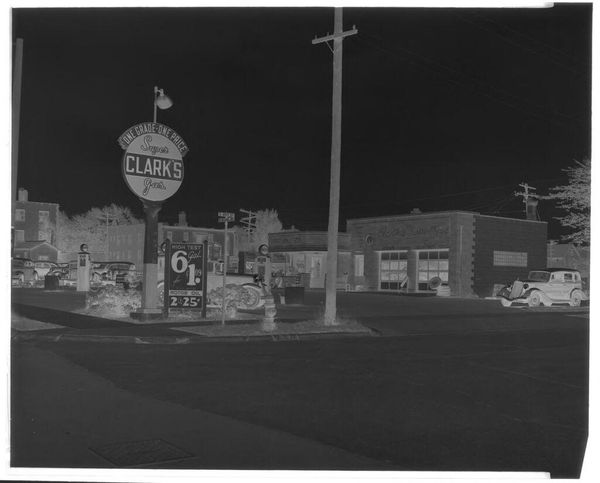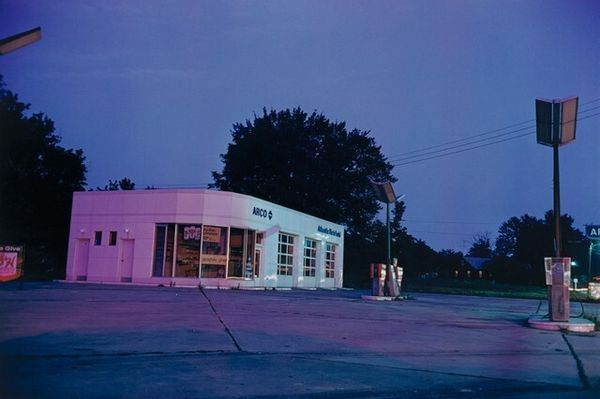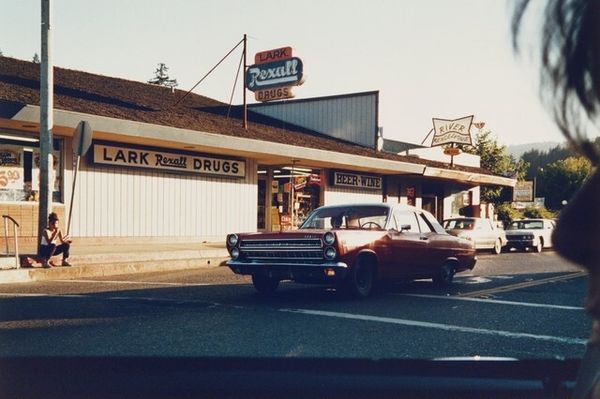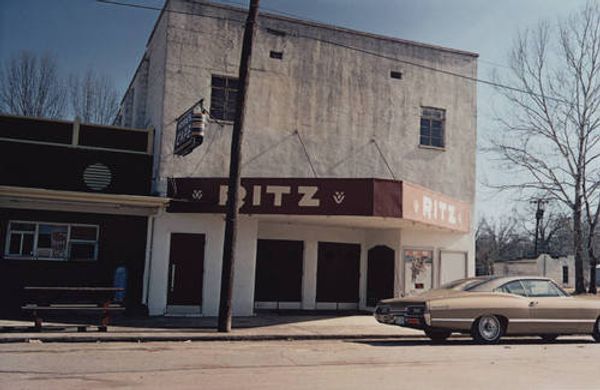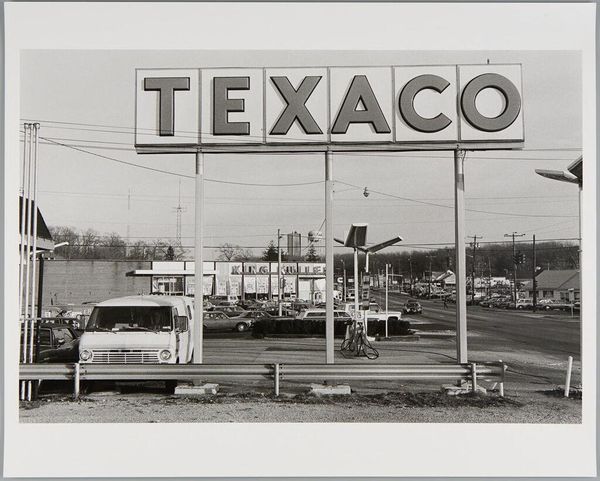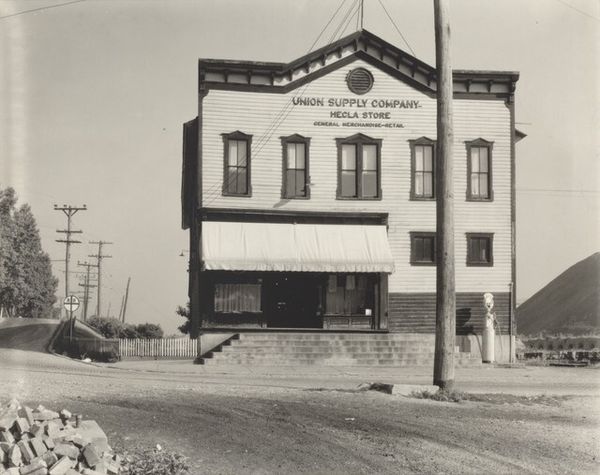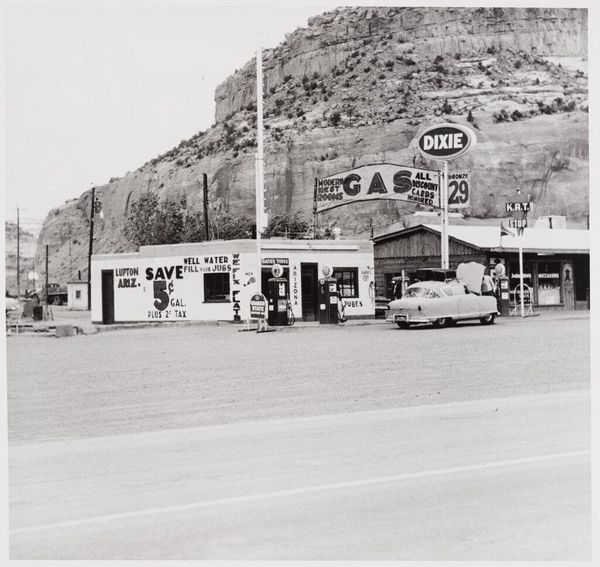
assemblage, photography
#
still-life-photography
#
contemporary
#
assemblage
#
landscape
#
street-photography
#
photography
#
watercolor
#
realism
Dimensions: image: 7.94 × 12.38 cm (3 1/8 × 4 7/8 in.) sheet: 8.89 × 13.34 cm (3 1/2 × 5 1/4 in.)
Copyright: National Gallery of Art: CC0 1.0
Curator: William Christenberry captured this photograph, titled "Coleman's Cafe, Greensboro, Alabama," in 1971. Look at the details embedded within the aged façade. What are your initial impressions? Editor: My first impression is one of faded glory. There's a quiet solemnity, like looking at a memory palace slowly dissolving back into the earth. All that exposed wood… Curator: Indeed. Christenberry frequently photographed vernacular architecture of the American South, and this image embodies that interest. Think about how roadside structures and the landscape are potent symbols of Southern identity. The weathered building almost seems to stand as a symbol itself. Editor: It's like an emblem, yes. And it speaks volumes about the economic realities of small-town Alabama at that time. That Coca-Cola sign becomes less about refreshment and more about cultural hegemony. How corporate iconography seeps into the visual fabric, becoming inseparable. It presents something once vital. Curator: I agree. Cola is just one symbolic fragment among others. Consider the numerous layers of advertising affixed to the cafe, almost obscuring it. They’re like layers of cultural narrative built over time, the very architecture infused with symbolism, encoding time itself. The visible disrepair whispers histories, not merely local ones. Editor: It makes you think about the intersection of commerce and community. And that feeling that the economic powers, in a way, eclipsed it, or led to its deterioration. I find myself asking what role Coleman’s played beyond being a café. The weathered surfaces and vintage advertisements hint at decades of gatherings. Did the cafe help solidify or become synonymous with Greensboro? Curator: Absolutely. Businesses like this are often informal gathering spaces that build and reflect a locality's cultural health. Christenberry was not simply documenting a decaying structure; his photography also hints at those emotional and psychological connections embedded in such locales, imbuing seemingly simple structures with layers of meaning. Editor: His careful choice of the ordinary invites a kind of quiet contemplation. Looking beyond its material degradation allows us to grasp its deeper significance, almost beyond an Alabama road stop, and rather as something deeply integrated with our larger visual histories. Curator: I concur entirely. Christenberry’s work resonates precisely because it holds so many cultural codes—visual, societal, and psychological all at once. Editor: Yes, and considering that the everyday—the roadside café—often holds profound lessons, and this photograph helps reveal this in meaningful ways.
Comments
No comments
Be the first to comment and join the conversation on the ultimate creative platform.
